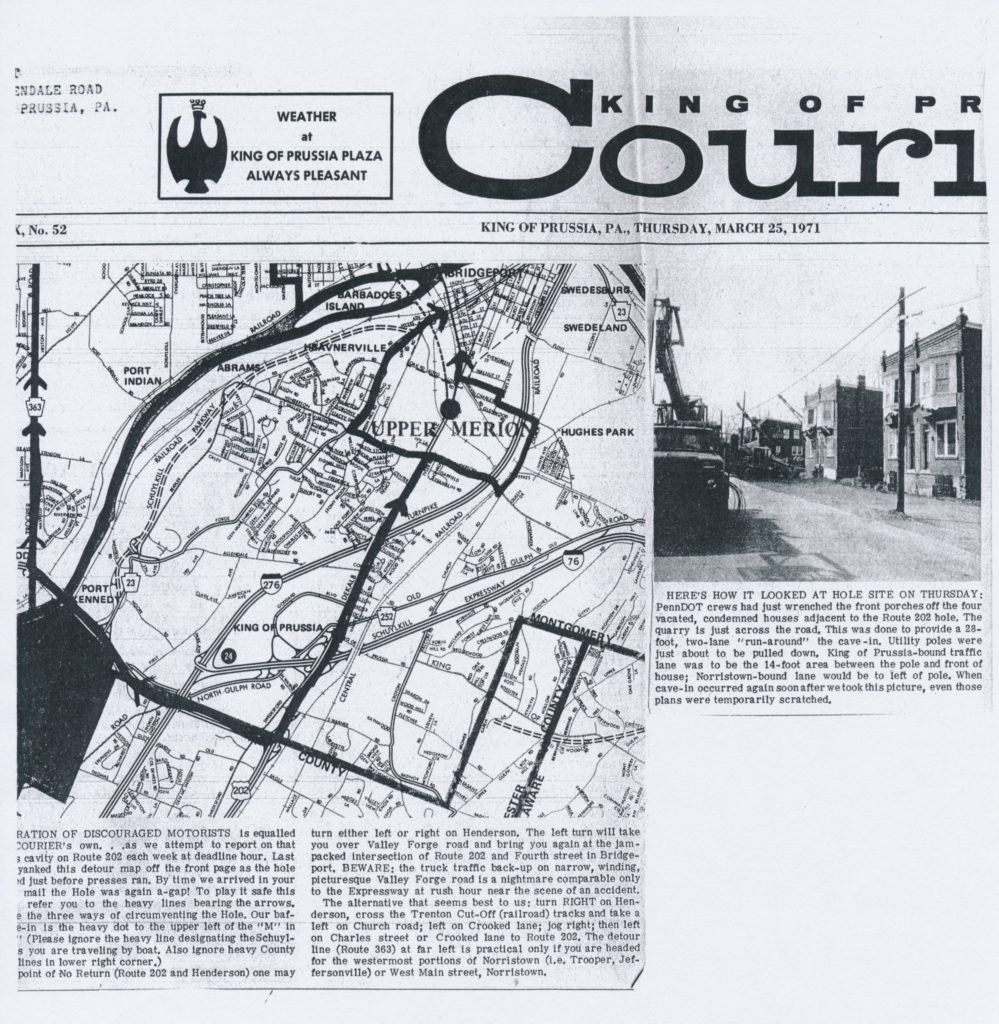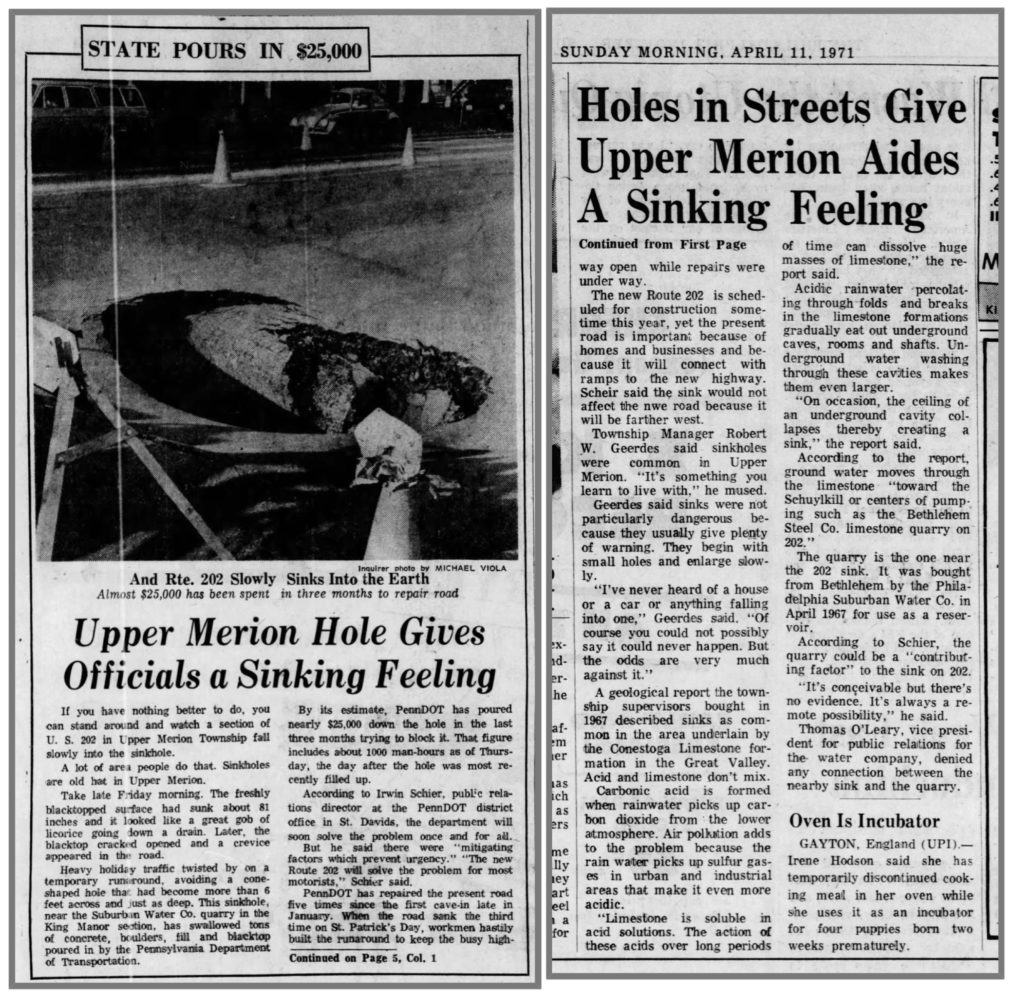Remember the King Manor sinkhole of 1971 that caused the rerouting of Rt 202?
Upper Merion Hole Gives Officials a Sinking Feeling – Philadelphia Inquirer, Sunday, April 11, 1971
If you have nothing better to do, you can stand around and watch a section of US 202 in Upper Merion Township fall slowly into the sinkhole.
A lot of area people do that. Sinkholes are old hat in Upper Merion.
Take late Friday morning. The freshly blacktopped surface had sunk about 81 inches and it looked like a great gob of licorice going down a drain. Later, the blacktop cracked open and a crevice appeared in the road.
Heavy holiday traffic twisted by on a temporary runaround, avoiding a cone shaped hole that had become more than 6 feet across and just as deep. This sinkhole, near the Suburban Water Co. quarry in the King Manor section, has swallowed tons of concrete, boulders, fill and blacktop poured in by the PA Dept of Transportation.
By its estimate, PennDOT has poured nearly $25,000 down the hole in the last three months trying to block it. That figure includes about 1,000 man-hours as of Thursday, the day after the hole was most recently filled up.
According to Irwin Schier, public relations director at the PennDOT district office in St. Davids, the department will soon solve the problem once and for all.
But he said there were “mitigating factors which prevent urgency.” The new Route 202 will solve the problem for most motorists,” Schier said.
PennDOT has repaired the present road five times since the first cave-ins late in January. When the road sank the third time on St Patrick’s Day, workmen hastily built the runaround to keep the busy highway open while repairs were under way.
The new Route 202 is scheduled for construction sometime this year, yet the present road is important because of homes and businesses and because it will connect with ramps to the new highway. Scheir said the sink would not affect the new road because it will be further west.
Township Manager Robert W. Geerdes said sinkholes were common in Upper Merion. “It’s something you learn to live with,” he mused.
Geerdes said sinks were not particularly dangerous because they usually give plenty of warning. They begin with small holes and enlarge slowly.
“I’ve never heard of a house or a car or anything falling into one,” Geerdes said. “Of course you could not possibly say it could never happen. But the odds are very much against it.”
According to a geological report the township supervisors bought in 1967, sinkholes are common in the area underlain by the Conestoga Limestone formation in the Great Valley. Acid and limestone don’t mix.
Carbonic acid is formed when rainwater picks up carbon dioxide from the lower atmosphere. Air pollution adds to the problem because the rain water picks up sulfur gases in the urban and industrial area that make it even more acidic.
“Limestone is soluble in acid solutions. The action of these acids over long periods of time can dissolve huge masses of limestone,” the report said.
Acidic rainwater percolated through folds and breaks in the limestone formations gradually eat out underground caves, rooms and shafts. Underground water washing through these cavities makes them even larger.
“On occasion, the ceiling of an underground cavity collapses thereby creating a sink,” the report said.
According to the report, ground water moves through the limestone “toward the Schuylkill or centers of pumping such as the Bethlehem Steel Co. limestone quarry on 202.”
The quarry is the one near the 202 sink. It was bought from Bethlehem by the Philadelphia Water Co. in April 1967 for use as a reservoir.
According to Schier, the quarry could be a “contributing factor” to the sink on 202.
“It’s conceivable but there’s no evidence, It’s always a remote possibility.” he said.
Thomas O’Leary, vice president for public relations for the water company, denied any connection between the nearby sink and the quarry.


